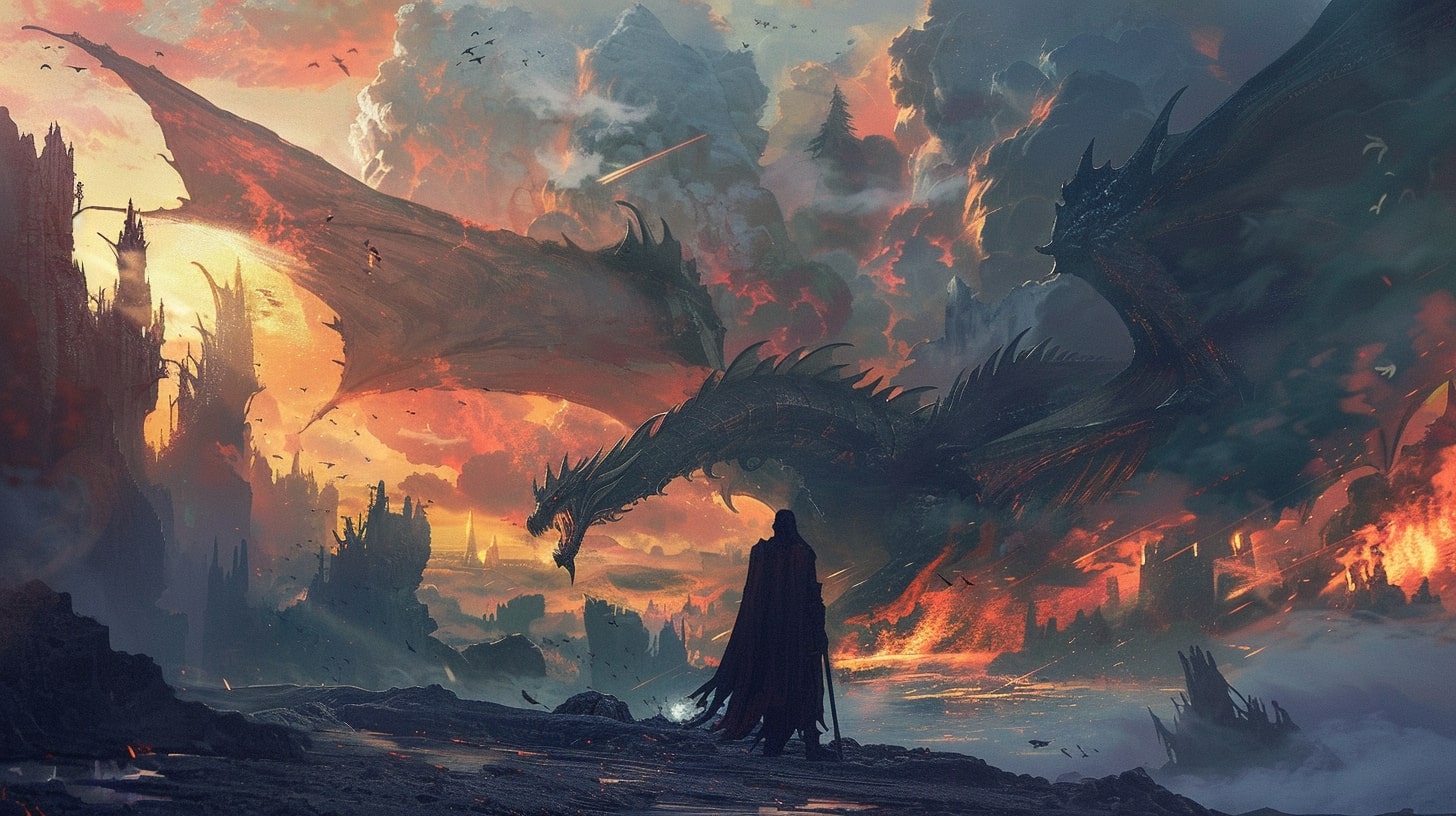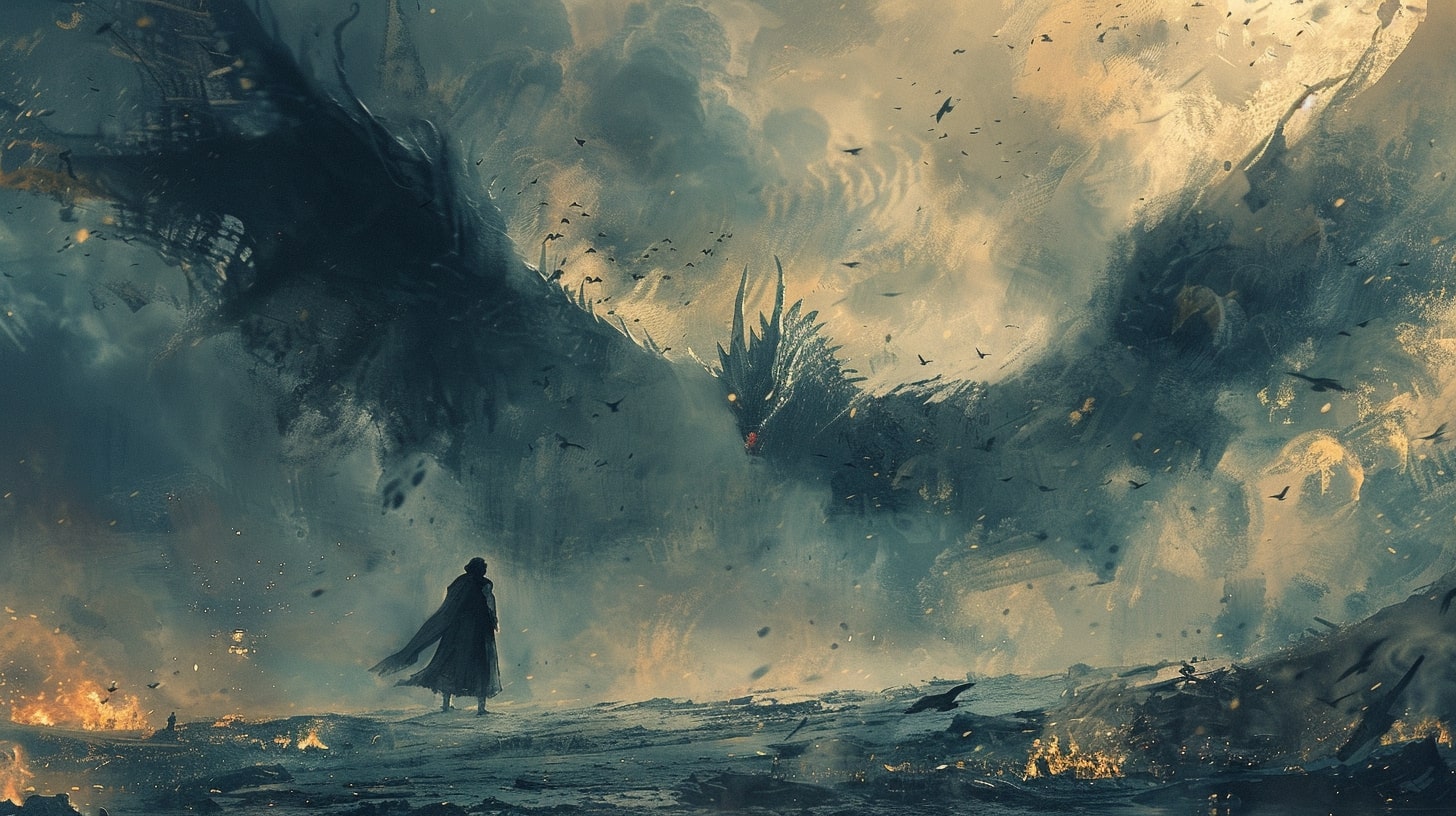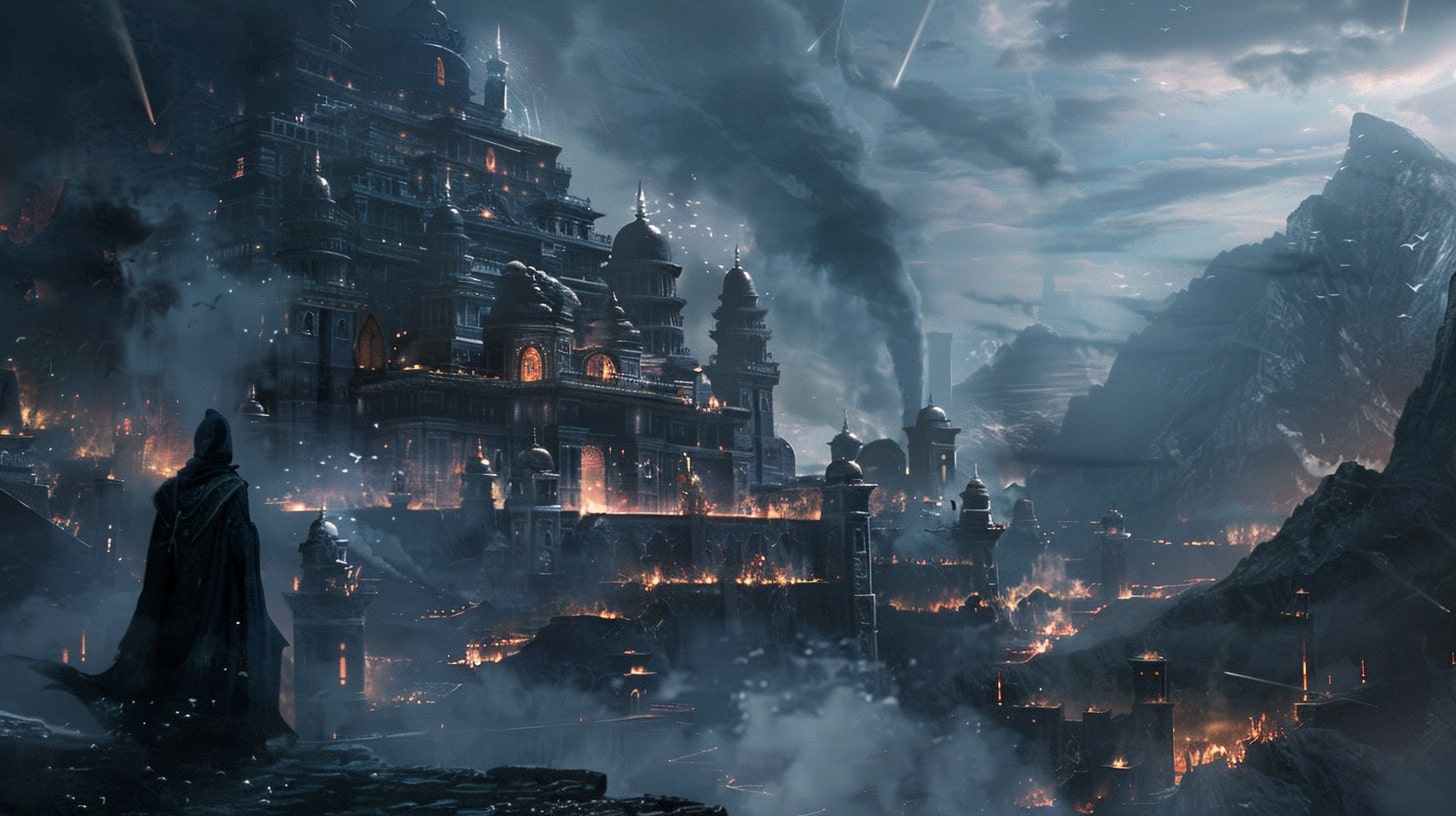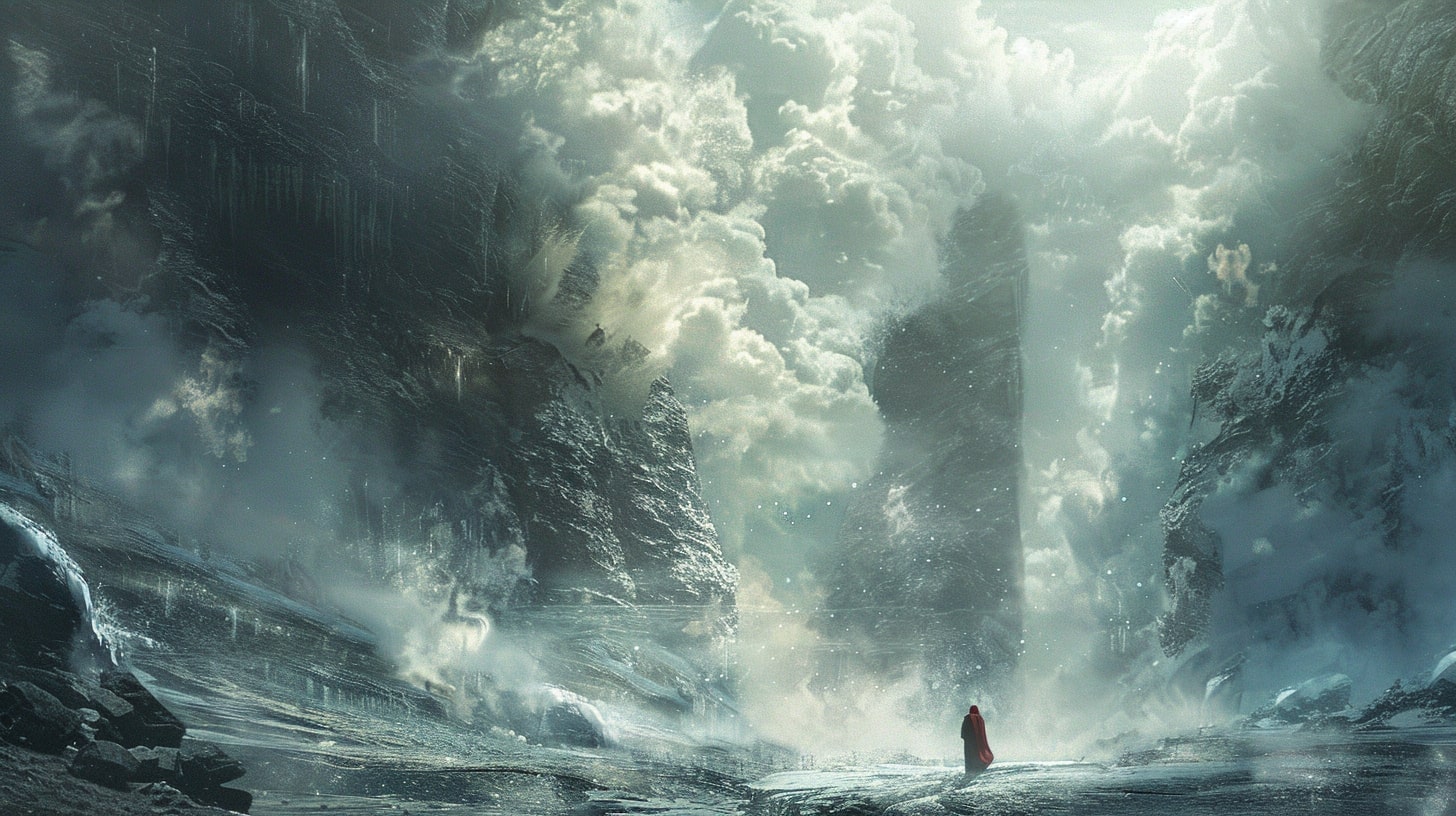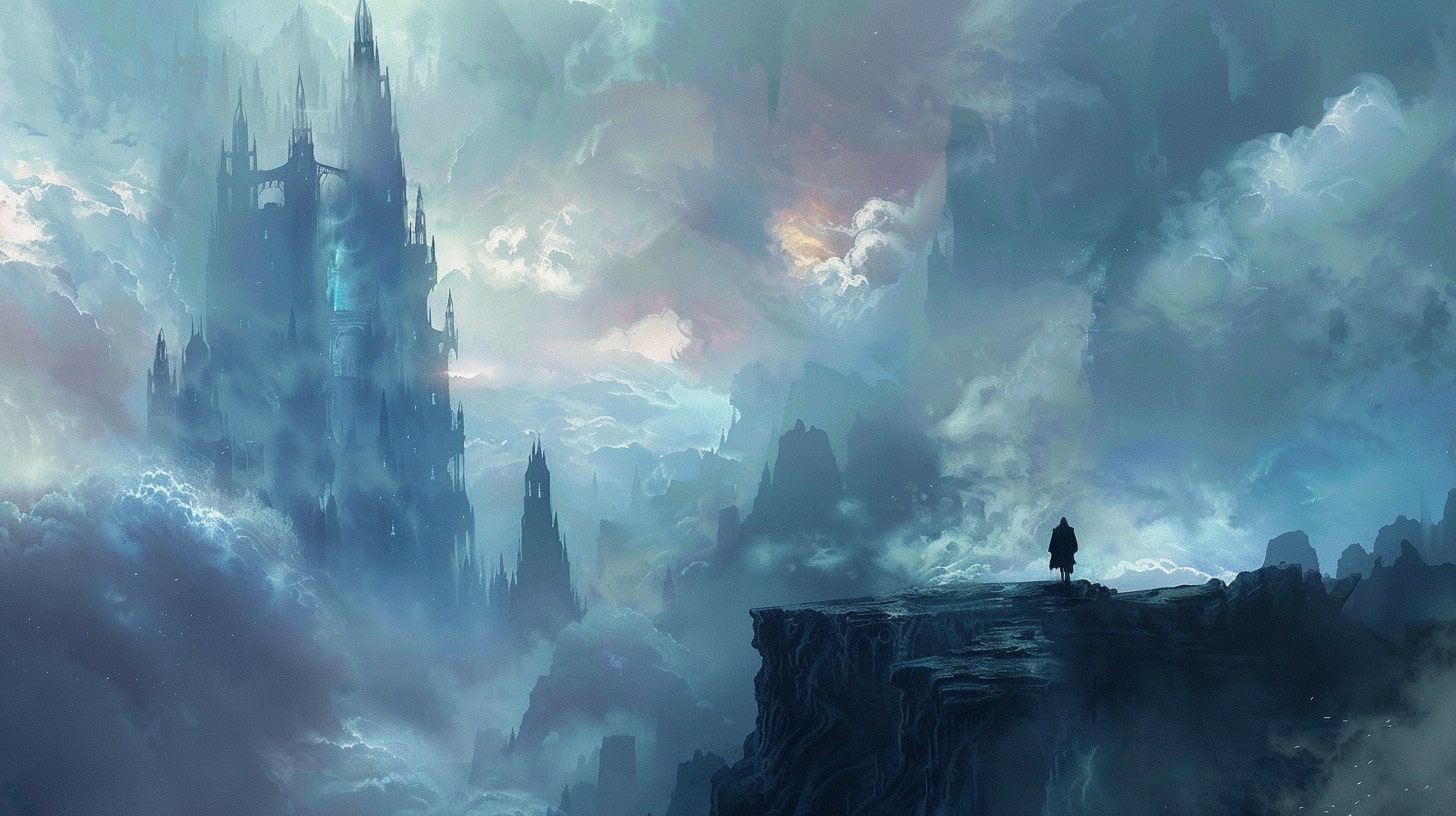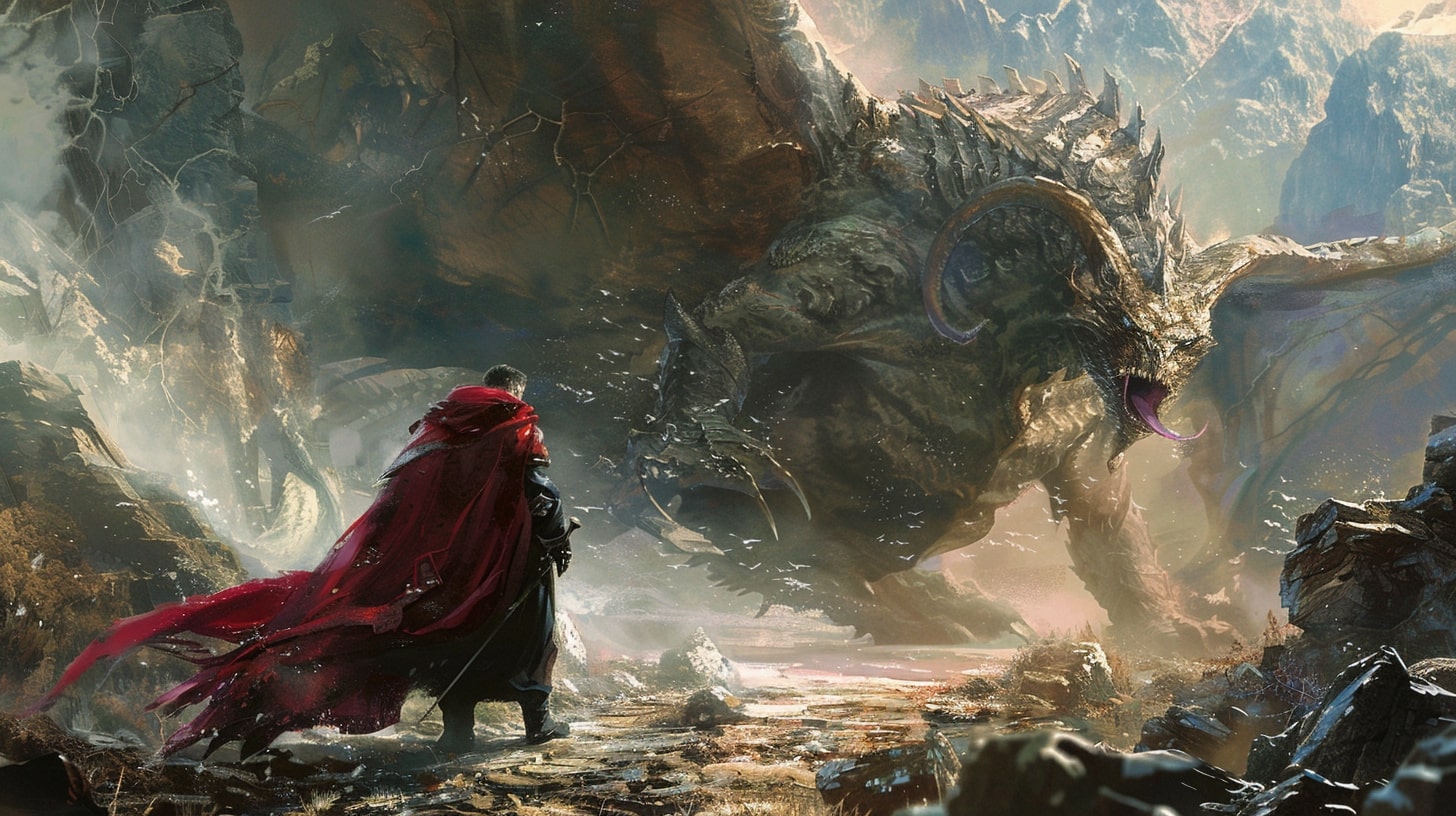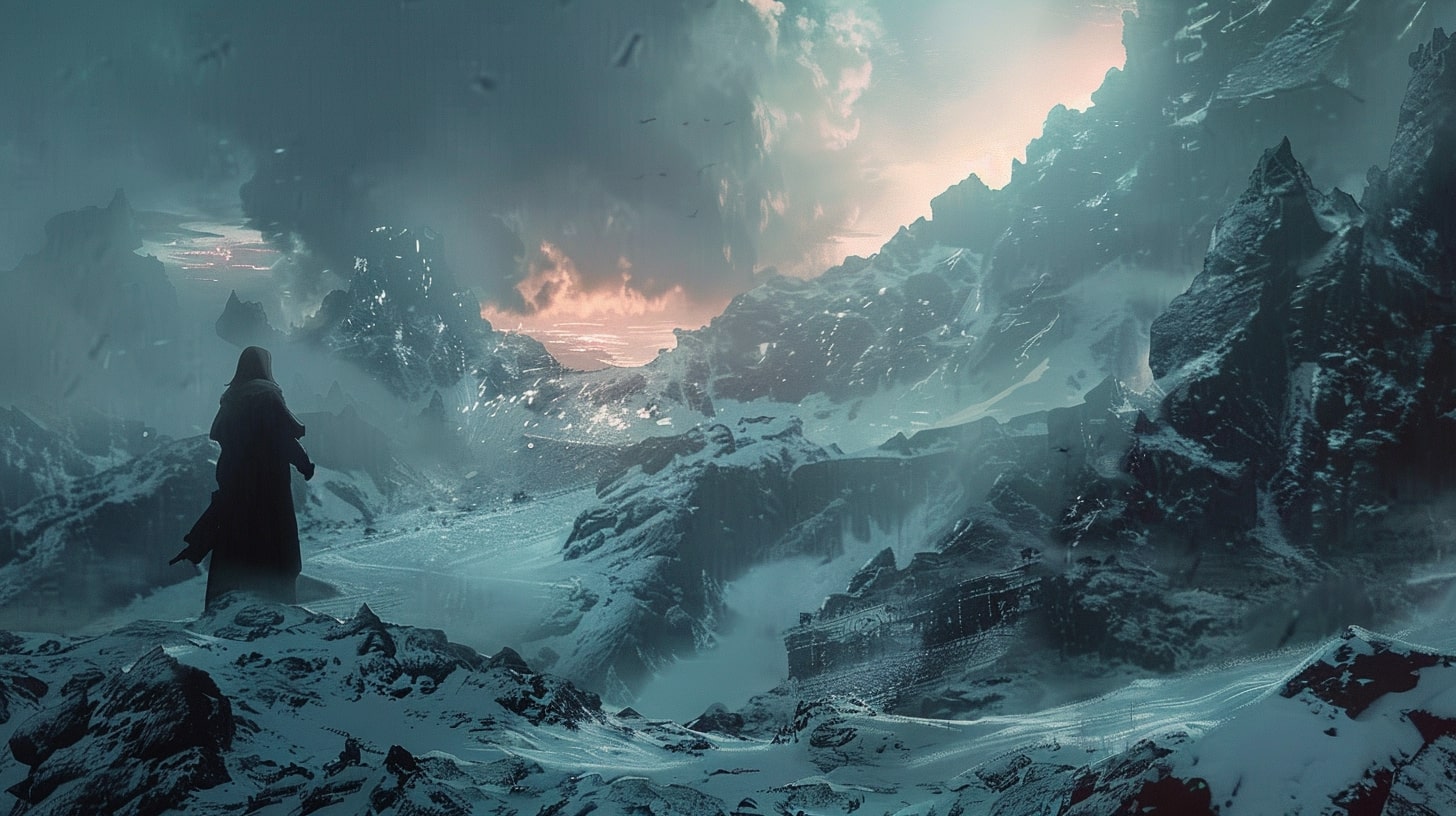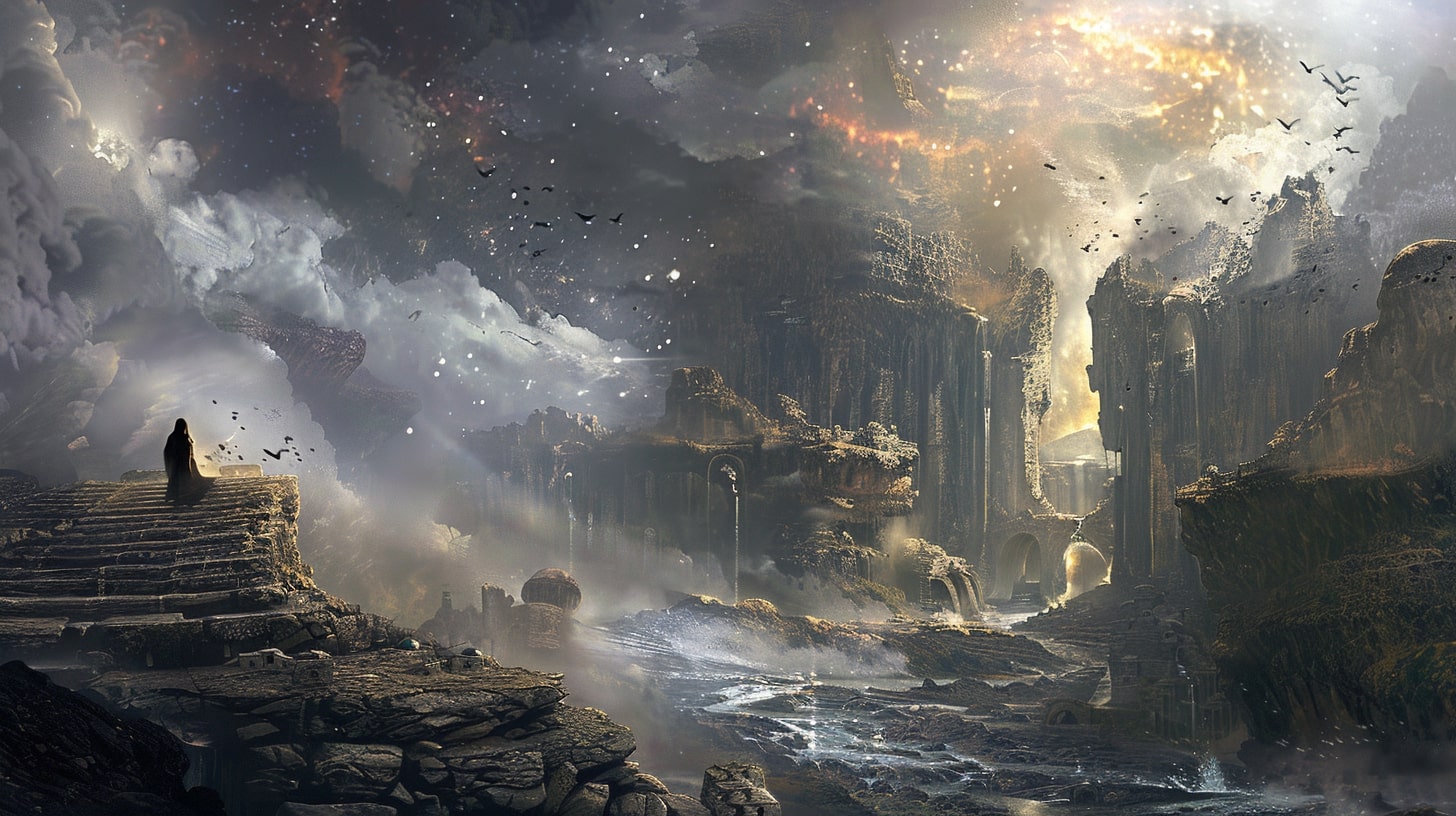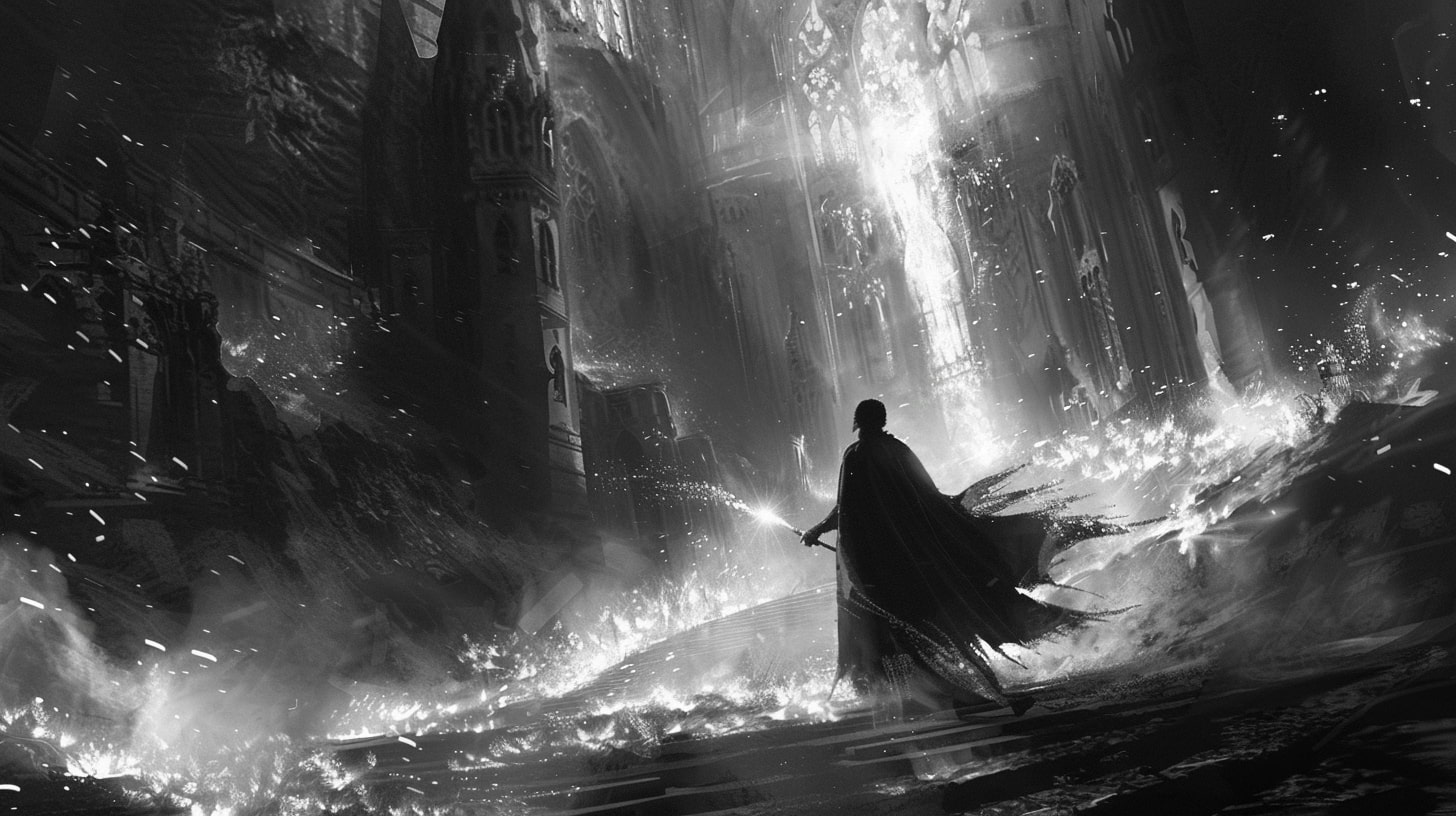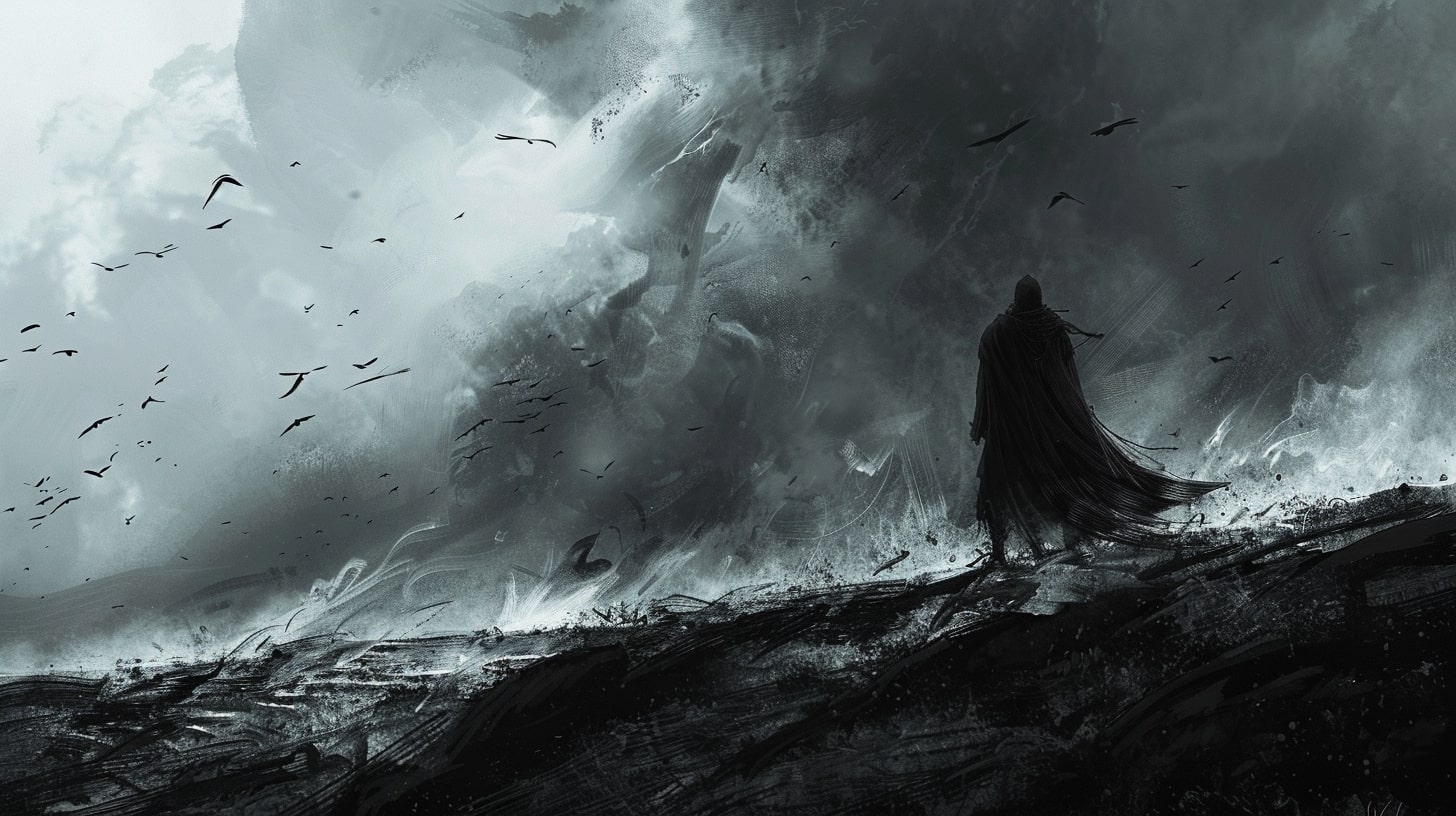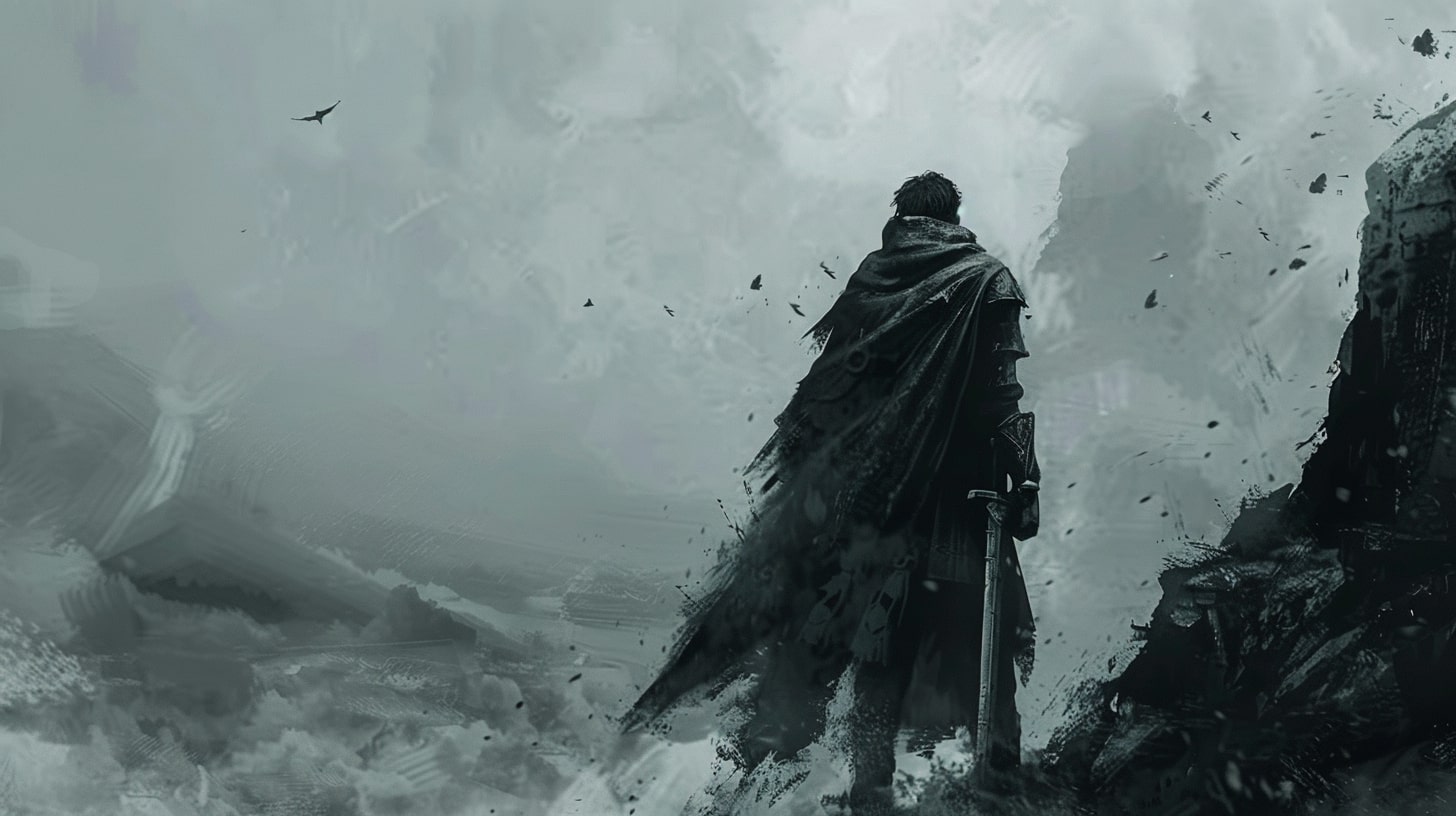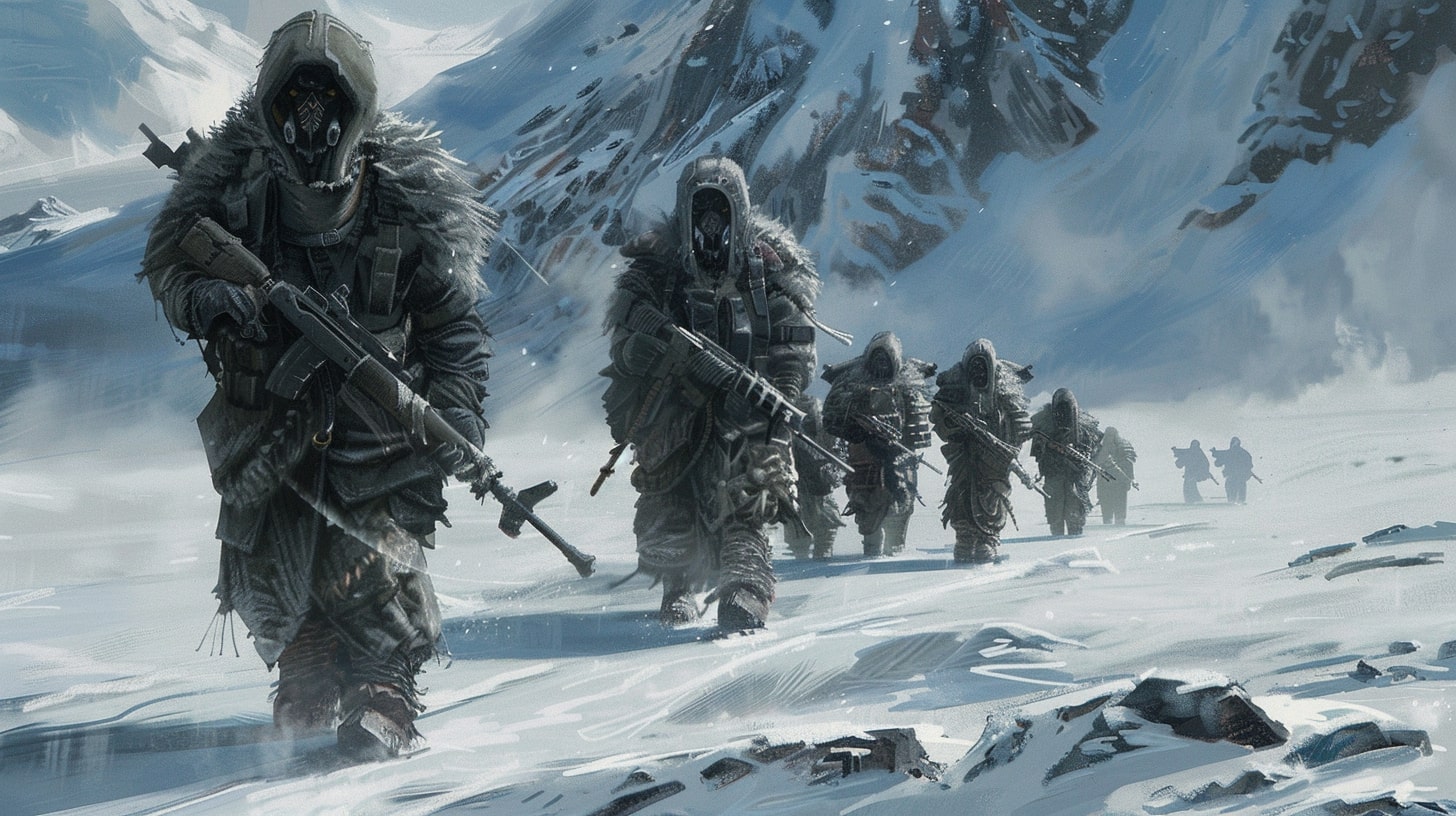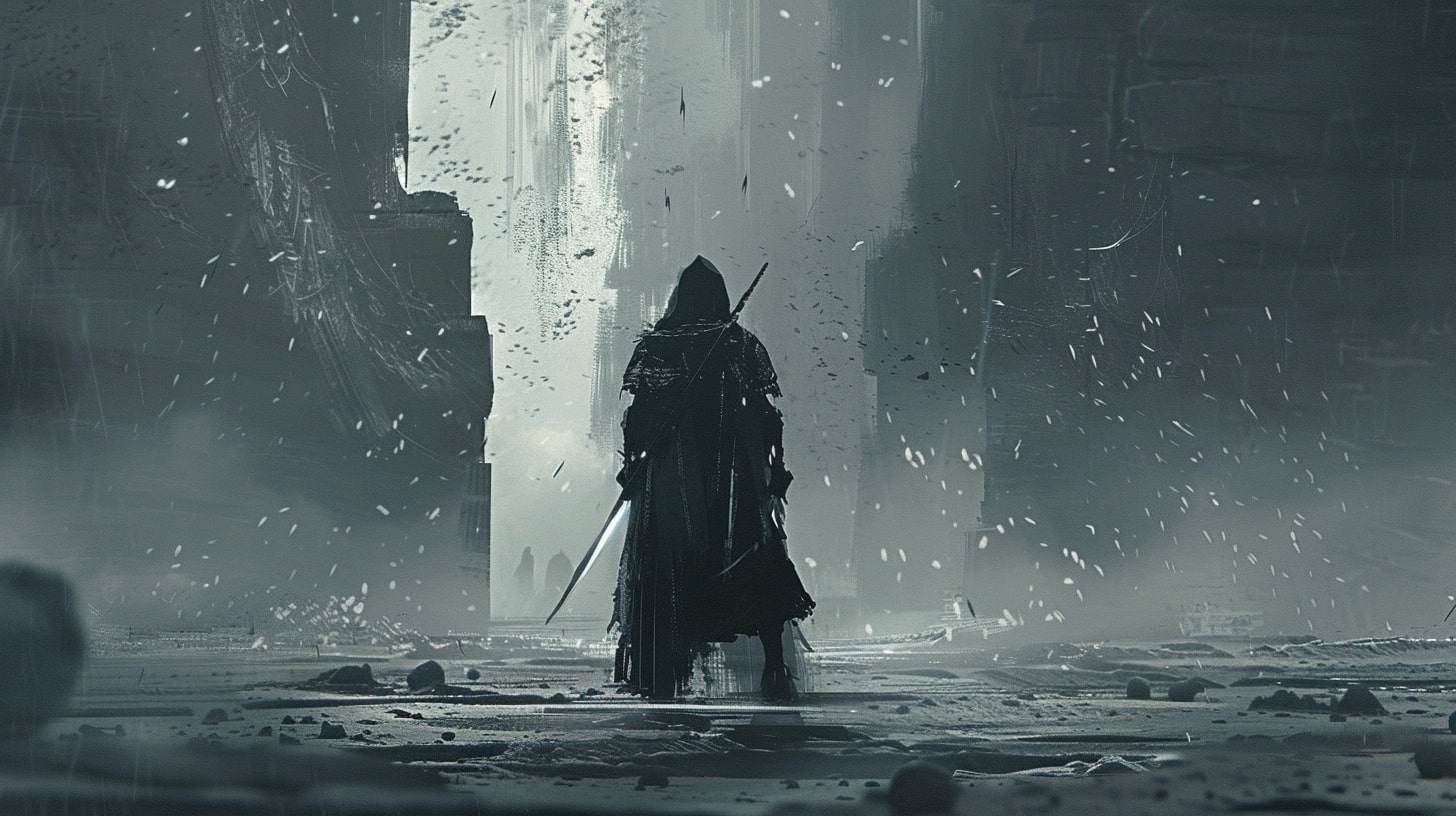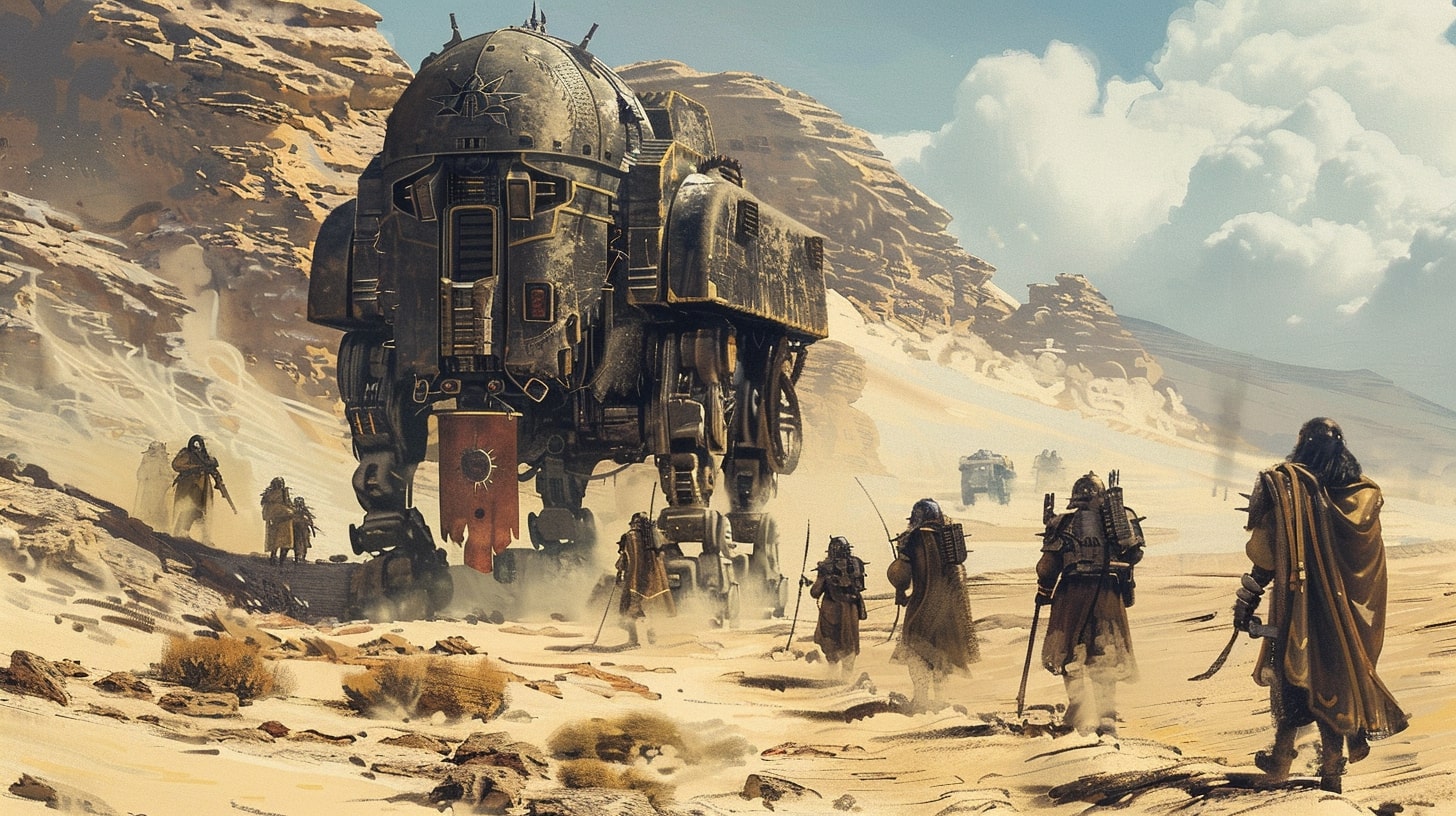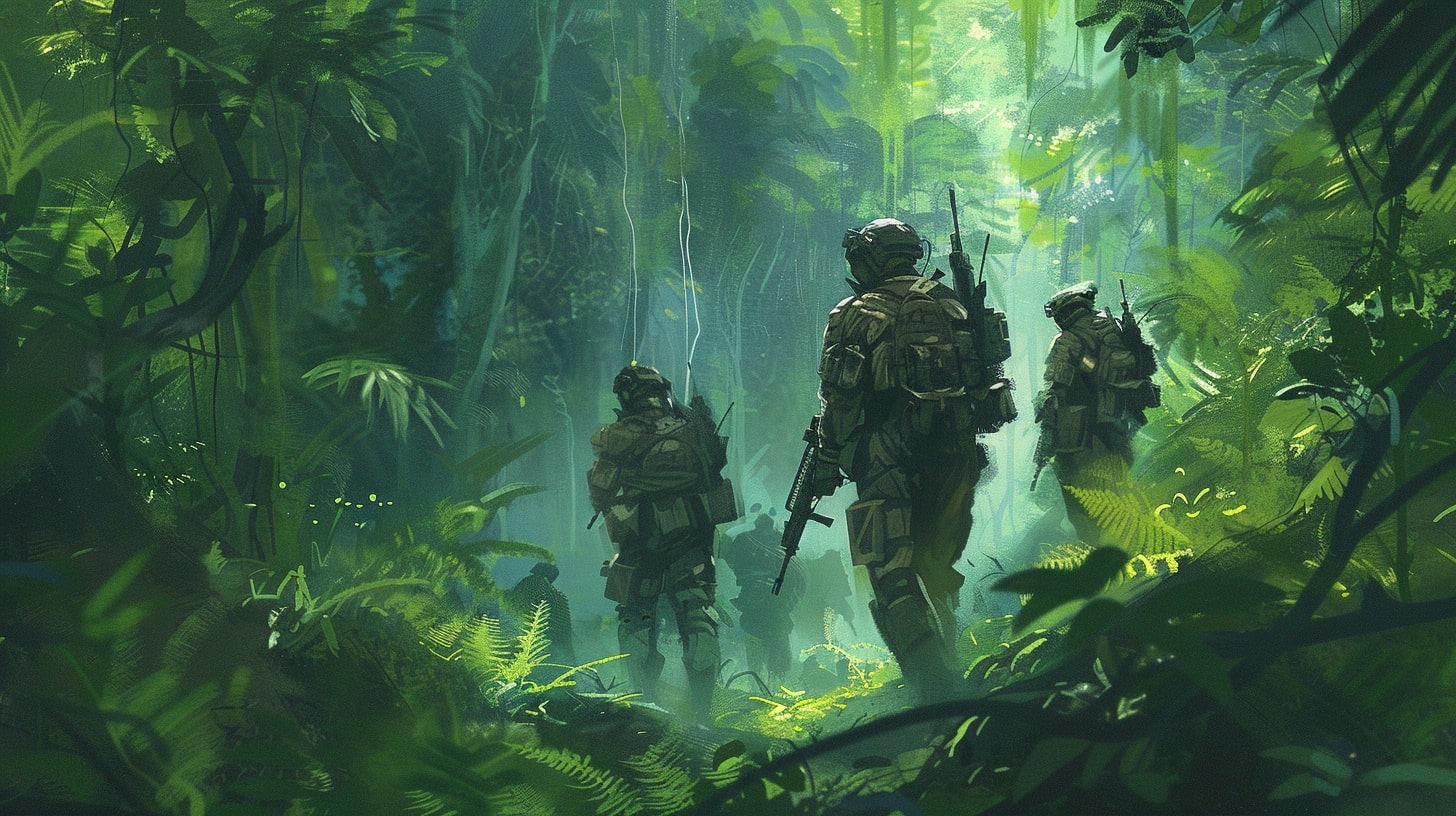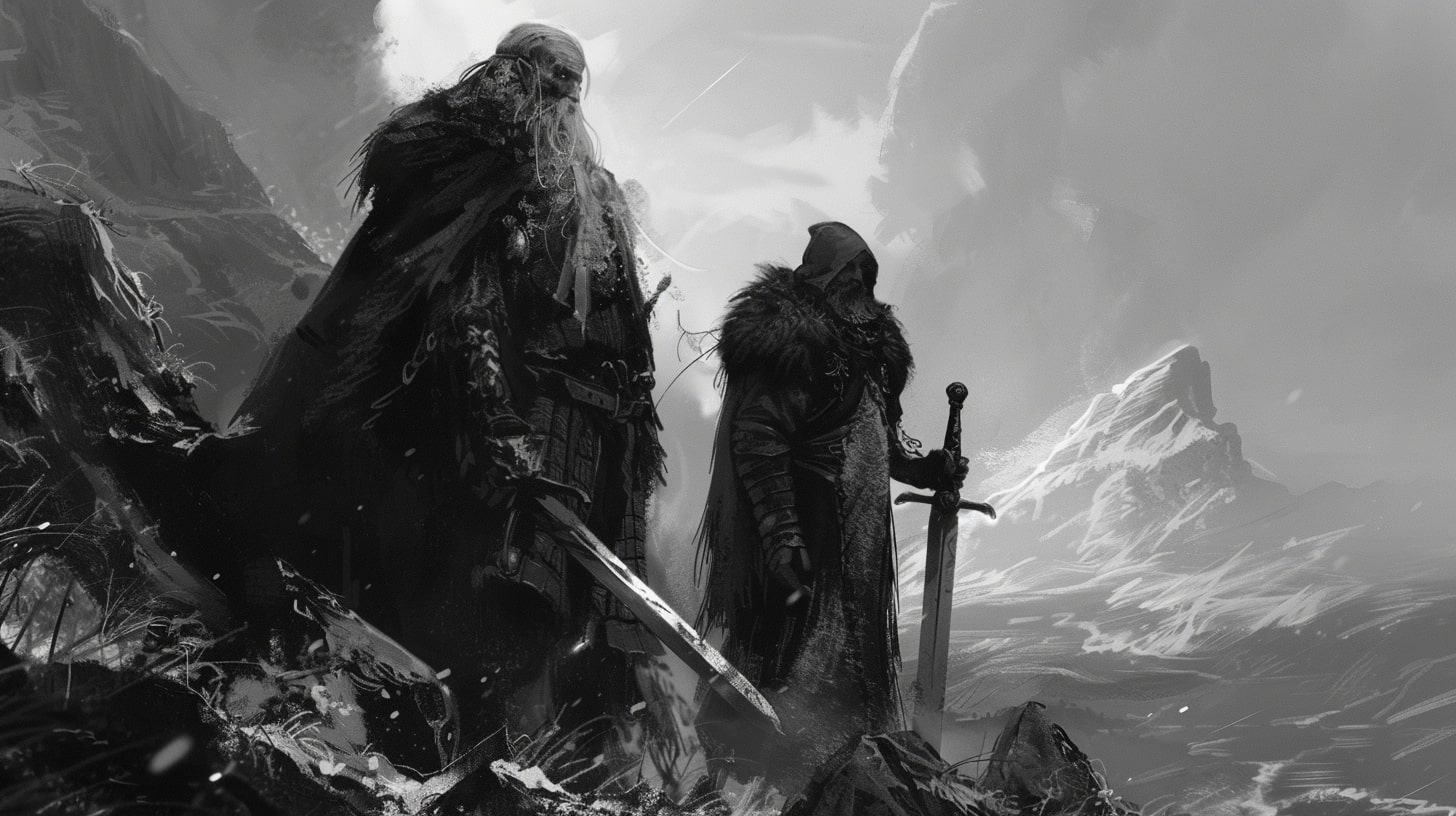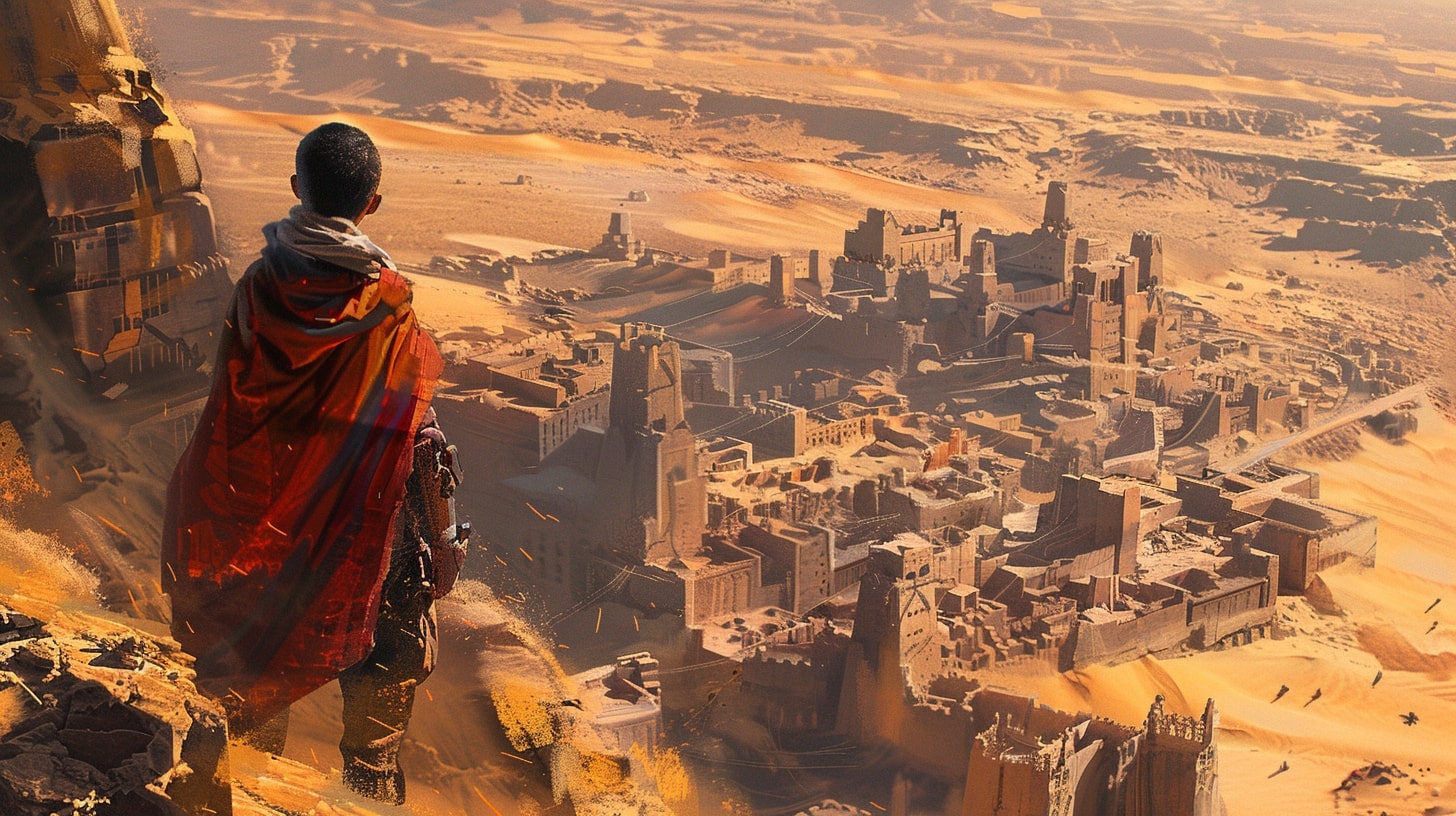Crafting a Captivating Antagonist
In the world of storytelling, a strong antagonist can be the key ingredient that elevates your story from good to great. Just as a hero needs a villain to conquer, your protagonist needs a formidable adversary to create conflict and drive the plot forward.
But developing compelling antagonist isn't always easy. So, let's dive into the importance of a strong antagonist and the characteristics that make them compelling.
The Importance of a Strong Antagonist
A well-developed antagonist is like the yin to your protagonist's yang. They provide the necessary opposition and challenges that force your main character to grow, evolve, and overcome obstacles. Without a strong antagonist, your story may lack tension and may feel lackluster. After all, what's a hero without a worthy opponent?
An antagonist adds depth and complexity to your narrative, creating a more engaging reading experience. They can embody the themes of your story, acting as a catalyst for change and highlighting the strengths and weaknesses of your protagonist. Additionally, a captivating antagonist can leave a lasting impression on your readers, making your story more memorable.
Characteristics of a Compelling Antagonist
To develop a captivating antagonist, consider incorporating these characteristics:
Motivation: Your antagonist needs a clear and believable motivation for their actions. Explore their desires, fears, and aspirations, as well as their background and experiences that shaped them. This will help readers understand their perspective, even if they don't agree with it.
Flaws and Vulnerabilities: A well-rounded antagonist should have flaws and vulnerabilities, just like any other character. This adds depth and makes them more relatable. It also provides opportunities for growth and transformation throughout the story.
Oppositional Goals: The antagonist should have goals and objectives that directly conflict with those of the protagonist. This creates the necessary tension and conflict to drive the plot. The clash between their goals and values should be significant and meaningful.
Complexity: Avoid creating a one-dimensional villain. Instead, give your antagonist depth and complexity. Show different facets of their personality, including both admirable and despicable traits. This makes them more human and adds realism to your story.
Unique Personality: Give your antagonist a distinct personality that sets them apart from other characters. Consider their speech patterns, mannerisms, and quirks. A unique personality can make your antagonist more memorable and captivating to readers.
By incorporating these characteristics into your antagonist, you can create a compelling and multi-dimensional character that will engage your readers and keep them invested in your story.
In the next sections, we will explore further aspects of developing a captivating antagonist, including their backstory, relationships with other characters, and the different archetypes they can embody.
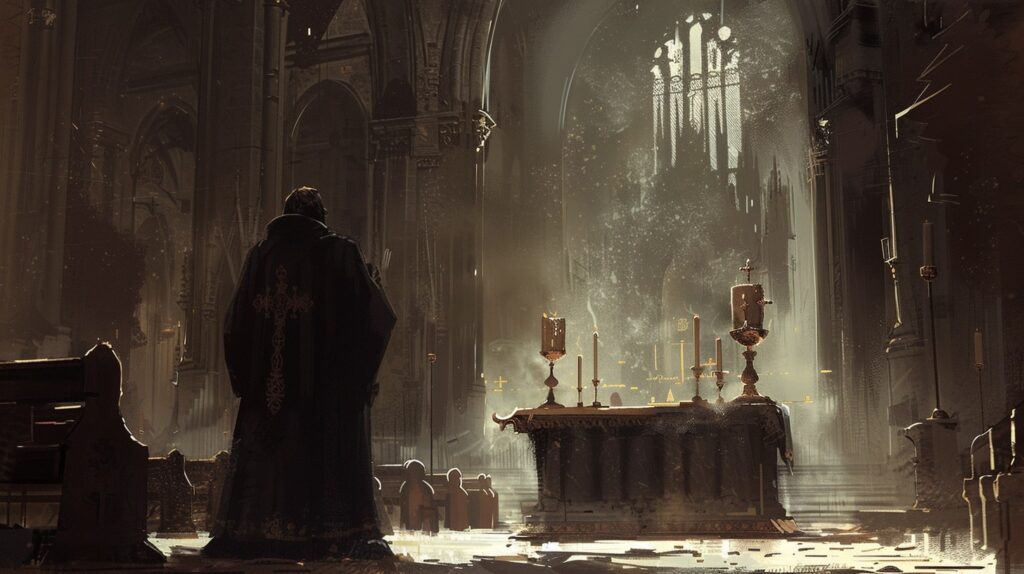
Understanding Your Antagonist
To develop a compelling antagonist, you must delve into their backstory and motivations as well as identify their flaws and vulnerabilities. These elements add depth and complexity to your antagonist, making them more engaging and relatable to your audience.
Backstory and Motivations
Every antagonist has a story that has shaped them into who they are. Consider their past experiences, traumas, or influential events that have led them down the path of becoming the antagonist. Understanding their backstory will help you uncover their motivations and the driving force behind their actions.
Perhaps your antagonist experienced a great injustice in their past, leading them to seek revenge or to bring about a sense of justice in their own twisted way. Maybe they have a personal vendetta against the protagonist due to a past conflict or betrayal. By exploring these aspects, you can create a more nuanced and believable antagonist.
Remember to develop a well-rounded motivation for your antagonist. This will help readers understand their perspective and make their actions more plausible. A complex and relatable antagonist can add depth to your story and create a thought-provoking dynamic between the antagonist and the protagonist.
Flaws and Vulnerabilities
While the antagonist may be the source of conflict in your story, it's important to remember that they are still human (or humanoid) and have their own flaws and vulnerabilities. These imperfections humanize the antagonist and make them more relatable to your readers.
Consider what weaknesses or vulnerabilities your antagonist possesses. It could be a physical limitation, an emotional trauma, or even a moral dilemma. These flaws can be used to create moments of tension and conflict within the story.
Additionally, the flaws and vulnerabilities of your antagonist can serve as opportunities for growth and change. As the story progresses, the antagonist may face challenges that force them to confront their weaknesses or make difficult choices. This character development adds complexity and intrigue to your antagonist's journey.
Understanding your antagonist's backstory, motivations, flaws, and vulnerabilities will help you create a captivating and multi-dimensional character. By developing a well-rounded antagonist, you can elevate the conflict and tension in your story, making it more engaging and memorable for your readers.

Creating Conflict and Tension
To develop a truly captivating antagonist, you need to create conflict and tension that will keep your readers on the edge of their seats. This section will explore two key elements of building tension: antagonist vs. protagonist and internal and external conflict.
Antagonist vs. Protagonist
The clash between the antagonist and the protagonist is the heart of any compelling story. The interplay between these two opposing forces drives the narrative forward and creates the stakes that keep readers invested.
Think of the antagonist and protagonist as the ultimate rivals, each with their own goals and motivations. This rivalry can take many forms: a battle of wits, a physical confrontation, or even a clash of ideologies. The conflict between them should be intense, with each trying to outsmart and outmaneuver the other at every turn.
To make this conflict truly engaging, ensure that both the antagonist and protagonist are well-developed characters with their own unique strengths and weaknesses. Explore their backstory, motivations, and relationships with other characters. This will add depth and complexity to their clash, making it all the more captivating for your readers.
Internal and External Conflict
Conflict can manifest in different ways, both internally and externally. Internal conflict refers to the struggles and dilemmas that occur within a character's mind and emotions. It often revolves around their beliefs, desires, or moral compass. This inner turmoil adds depth and complexity to the character, making them more relatable and human.
External conflict, on the other hand, involves the physical and tangible obstacles that the characters face. It can be a result of their interactions with the world around them, such as other characters, society, or even the environment. These external challenges push the characters to their limits and test their resolve.
For a captivating antagonist, it's essential to develop both internal and external conflicts. Character development thrives on conflict.
Explore the inner demons, doubts, and flaws that drive their actions. This will make them more multidimensional and relatable to readers. Additionally, create external obstacles that the antagonist must overcome, such as formidable opponents, societal pressures, or even their own limitations.
By creating a compelling dynamic between the antagonist and protagonist and developing both internal and external conflicts, you can ratchet up the tension in your story. This will keep your readers engaged and eager to see how the conflict unfolds. Remember to weave these elements seamlessly into your narrative, creating a tapestry of tension that will keep your audience captivated until the very end.
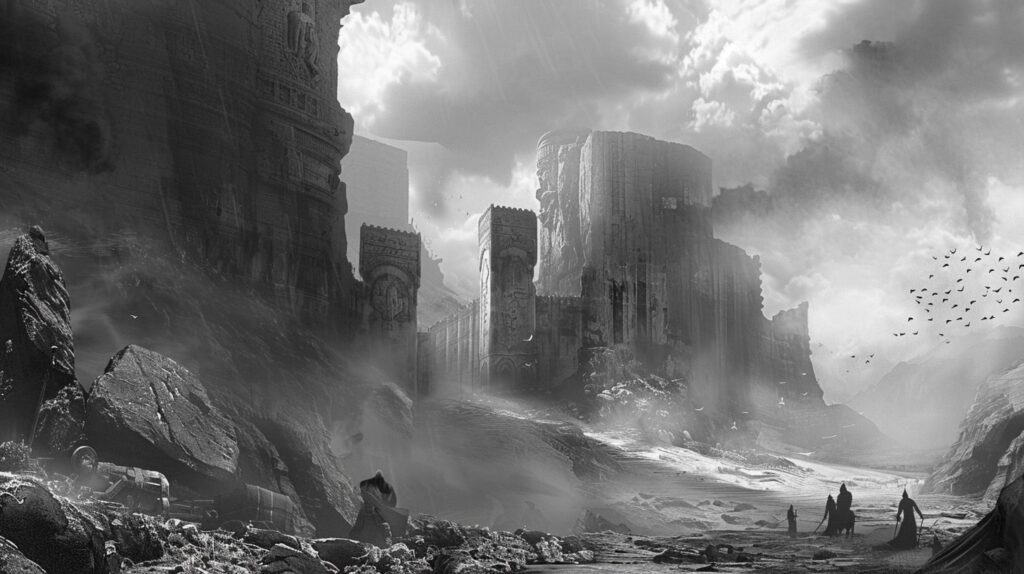
Developing a Memorable Antagonist
To create a memorable antagonist, you need to infuse them with unique personality traits that set them apart from the rest of your characters. This will help them leave a lasting impression on your readers. Additionally, giving them a memorable visuals and appearance can further enhance their impact. Let's dive into these aspects in more detail.
Unique Personality Traits
When developing your antagonist, think beyond the clichés and strive for something distinctive. Consider giving them a combination of contradictory traits that make them intriguing and complex. For example, your antagonist could be charming and charismatic, but also manipulative and deceitful. This will add depth to their character and create an interesting dynamic between them and the protagonist.
To get inspired, check out our article on character personality traits. It provides a wide range of traits you can explore to craft a truly unique antagonist. Remember, the key is to make them compelling and relatable, even if their actions are morally questionable.
Memorable Visuals and Appearance
Your antagonist's visuals and appearance are another essential aspect of their memorability. Consider how their physical features, clothing, and overall demeanor reflect their personality and role in the story. Do they have a distinct hairstyle or a signature accessory? These visual cues can help readers instantly recognize and associate them with their villainous role.
When describing your antagonist's appearance, be vivid and specific. Paint a picture for your readers, highlighting their most striking and defining features. This will make them visually memorable and contribute to their overall impact.
For more tips on character appearance and description, be sure to check out our article on character appearance and description.
By developing a memorable antagonist with unique personality traits and a visually distinct appearance, you can captivate your readers and elevate the conflict in your story. Remember to strike a balance between complexity and relatability, allowing your antagonist to become a character readers love to hate.
Antagonist Archetypes
When it comes to crafting a captivating antagonist, there are a few archetypes that can add depth and intrigue to your story. Whether you're writing a thrilling mystery or an epic fantasy, exploring these archetypes can help you develop a compelling antagonist that will keep your readers engaged. Let's take a look at three popular antagonist archetypes: The Mastermind, The Enforcer, and The Manipulator.
The Mastermind
The Mastermind is the brains behind the operation, the puppeteer pulling the strings from the shadows. They are cunning, intelligent, and always several steps ahead of the protagonist. With meticulous planning and a knack for strategy, they excel at orchestrating complex schemes and manipulating others to achieve their goals.
The Mastermind's strength lies in their ability to anticipate the protagonist's every move. They are often characterized by their sharp intellect, resourcefulness, and an uncanny ability to manipulate situations to their advantage. The Mastermind archetype is commonly found in detective stories, heist narratives, and political thrillers. Their primary goal is to outwit the protagonist and maintain control over the unfolding events.
The Enforcer
In contrast to the Mastermind, the Enforcer is the muscle of the operation. They are physically imposing, relentless, and often serve as the primary obstacle for the protagonist. Whether they are a skilled assassin, a ruthless henchman, or a formidable warrior, the Enforcer archetype brings a palpable sense of danger and physicality to the story.
The Enforcer excels in combat and is known for their strength, skill, and unwavering loyalty to the antagonist. They are often tasked with carrying out the antagonist's bidding, eliminating any threats that stand in their way. The Enforcer archetype adds intensity and action to the narrative, creating thrilling confrontations between the protagonist and their formidable adversary.
The Manipulator
The Manipulator is a master of psychological warfare. They excel at playing mind games, deceiving others, and exploiting their weaknesses. Their power lies in their ability to influence and control those around them, often through manipulation, charm, and manipulation.
The Manipulator archetype is known for their silver tongue, persuasive tactics, and ability to exploit others' emotions and vulnerabilities. They are skilled at sowing seeds of doubt, turning allies against each other, and creating chaos within the protagonist's world. The Manipulator archetype is commonly found in psychological thrillers, dramas, and stories focused on interpersonal relationships.
By incorporating these antagonist archetypes into your storytelling, you can create dynamic and multi-dimensional adversaries for your protagonists. Remember, the most compelling antagonists are those with their own motivations, flaws, and vulnerabilities. They should challenge the protagonist in unexpected ways, driving the story forward and keeping readers on the edge of their seats.
For more insights and techniques on character development, check out our articles on character personality traits and character development exercises.
Building a Dynamic Antagonist
In order to create a captivating antagonist, it's important to focus on their character arc and growth as well as their relationships with other characters. By developing these aspects, you can make your antagonist a multi-dimensional and compelling presence in your story.
Character Arc and Growth
Just like a protagonist, an antagonist should undergo their own journey of growth and transformation. This doesn't mean they have to become a hero, but rather that they evolve and change in some way throughout the narrative. Perhaps they start off as a minor nuisance and gradually become a formidable threat, or maybe they begin with noble intentions but end up succumbing to their darker instincts.
To create a dynamic character arc for your antagonist, consider their motivations, fears, and desires. What drives them to oppose the protagonist? How do their actions and choices shape their development? By exploring these elements, you can craft a nuanced antagonist who feels human and relatable, even if their actions are morally questionable.
Remember, a well-developed antagonist adds depth and complexity to your story. They can challenge the protagonist in unexpected ways and force them to confront their own weaknesses and flaws. Don't shy away from giving your antagonist moments of vulnerability or even sympathetic qualities. This will make them more three-dimensional and intriguing.
Relationships with Other Characters
The relationships your antagonist has with other characters in your story can greatly impact their development and the overall narrative. Consider how they interact with the protagonist, as well as with other key characters. Are they constantly at odds with the protagonist, engaging in a battle of wits and wills? Or do they share a complicated history that blurs the line between friend and foe?
The dynamics between your antagonist and other characters can reveal different facets of their personality and motivations. Their relationships could be driven by rivalry, betrayal, or even unexpected alliances. These interactions can create tension, conflict, and dramatic moments that propel the story forward.
To strengthen the relationships between your antagonist and other characters, think about their shared history, shared goals, and conflicting interests. How do these dynamics shape their interactions? How do they influence each other's actions and decisions? By exploring these questions, you can develop rich and engaging relationships that add depth to your antagonist and the overall story.
Building a dynamic antagonist involves giving them a compelling character arc and exploring their relationships with other characters. By focusing on these aspects, you can create an antagonist that is more than just a one-dimensional villain. They can challenge the protagonist, evolve throughout the story, and leave a lasting impact on your readers.


